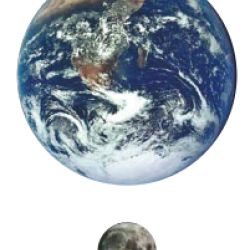Source Institutions
Source Institutions
Add to list Go to activity
Activity link broken? See if it's at the internet archive

In this activity, learners explore the relative sizes and distances of objects in the solar system. Without being informed of the expected product, learners will make a Play-doh model of the Earth-Moon system, scaled to size and distance. The facilitator reveals the true identity of the system at the conclusion of the activity. During the construction phase, learners try to guess what members of the solar system their model represents. Each group receives different amounts of Play-doh, with each group assigned a color (red, blue, yellow, white). At the end, groups set up their models and inspect the models of other groups. They report patterns of scale that they notice; as the amount of Play-doh increases, for example, so do the size and distance of the model. This resource guide includes background information about the Earth to Moon ratio and solar eclipses.
- 5 to 10 minutes
- 30 to 45 minutes
- $1 - $5 per group of students
- Ages 8 - 18
- Activity, Lesson/Lesson Plan, Model
- English
Quick Guide
Materials List (per group of students)
- String
- Rulers or meter sticks
- Scissors (optional)
- Cans of Play-doh, different colors
- Large paper sheets as work surface for rolling and shaping the Play-doh
Subjects
-
Earth and Space Science
- Astronomy
- Earth Structure
-
Earth, Moon and Sun
- Eclipses
-
Solar System
- The Sun
- The Moon
- The Planets
-
Mathematics
-
Geometry
- Solid Geometry
-
Measurement
- Circles
-
Geometry
-
The Nature of Science
-
The Scientific Process
- Conducting Investigations
- Formulating Explanations
-
The Scientific Process
Informal Categories
- Model Building
Audience
To use this activity, learners need to:
- see
- see color
- read
- touch
Learning styles supported:
- Involves teamwork and communication skills
- Involves hands-on or lab activities
Other
Includes alignment to state and/or national standards:
This resource is part of:
Access Rights:
- Free access
By:
- Education and Outreach Office, McDonald Observatory
Rights:
- All rights reserved, The University of Texas at Austin, 2011
Funding Source:
- NASA (Space Telescope Science Institute, operated by the Association of Universities for Research in Astronomy), HST-EO-10861.35-A
